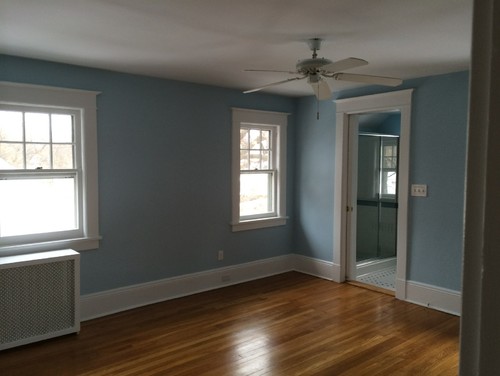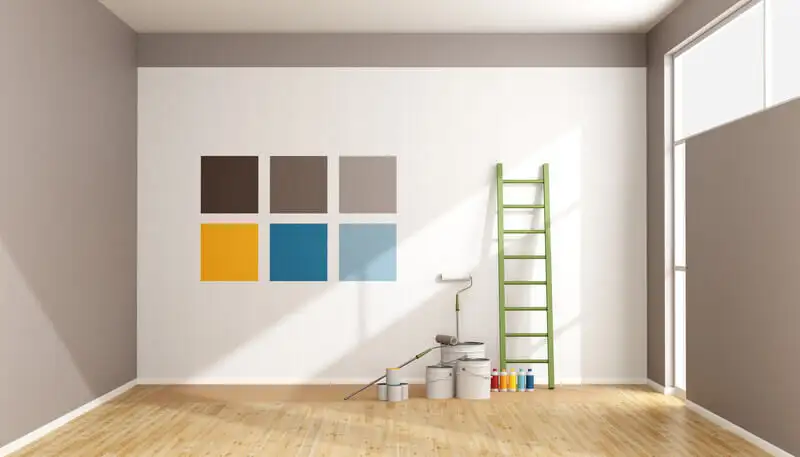Enhance Your Inside Style With Comprehensive Shade Examination
The combination of color examination into indoor design presents an unique opportunity to improve and raise the aesthetic and emotional vibration of an area. By engaging with a skilled shade specialist, you can browse the intricacies of shade choice, guaranteeing that your choices not only complement building functions but also reverberate with individual style and mental effect. This calculated partnership can substantially influence the total ambience of your atmosphere, promoting a sense of harmony and purpose. Comprehending the nuances of this process is crucial-- what vital facets should be thought about to accomplish optimum outcomes?
Benefits of Shade Consultation

Additionally, color appointment help in maximizing natural light and maximizing spatial assumption. Lighter hues can make a room appear even more large, while darker shades create an intimate setting. Cleveland Metro Painting Specialists. This calculated application of color can substantially affect the total atmosphere of any indoor area
In addition, expert specialists possess a thorough understanding of timeless standards and existing fads, making certain that the chosen shades will continue to be appealing in time. This foresight can save customers from expensive redesigns in the future. Lastly, color consultation empowers customers by supplying them with a clear vision and direction, fostering self-confidence in their design options and eventually resulting in a more effective and rewarding interior decoration result.
Comprehending Shade Psychology
The value of color psychology in interior decoration can not be overemphasized, as it looks into the mental and psychological results that different colors can evoke in individuals. Shades can affect mood, actions, and also productivity, making them an essential factor to consider in any kind of style project.
For example, cozy shades such as red, orange, and yellow are typically related to power and warmth. They can stimulate feelings of enjoyment and convenience, making them appropriate for social rooms like living rooms or kitchens. On the other hand, great colors like blue, eco-friendly, and purple often tend to evoke peace and tranquility, making them suitable for rooms or meditation locations.
In addition, the use of neutral tones can develop a balanced atmosphere by enabling the bolder colors to stand out without overwhelming the detects. Recognizing these psychological impacts enables designers to create spaces that not only look cosmetically pleasing however additionally advertise emotional health.
Including shade psychology into interior layout entails a thoughtful option of tones customized to the desired feature of each room, ultimately improving the overall experience for its owners. This understanding is essential for attaining a useful and harmonious interior environment.
The Shade Wheel Clarified
Comprehending the partnerships between shades is necessary for efficient interior decoration, and the color wheel functions as a valuable tool in this procedure. The shade wheel, created by Isaac Newton in the 17th century, highlights the range of colors prepared in a round format. It makes up primaries-- red, blue, official website and yellow-- that can not be produced by mixing other colors. Second colors, formed additional hints by integrating primaries, include environment-friendly, orange, and purple. Tertiary shades result from mixing a main and an additional color, leading to tones such as green and red-orange.
The color wheel aids designers understand the connections between colors, consisting of complementary, analogous, and triadic schemes. Complementary shades, positioned opposite each other on the wheel, develop dynamic contrasts that can invigorate a space.
Utilizing the shade wheel in interior decoration not only boosts aesthetic charm however additionally stimulates certain feelings and ambiences, making it a vital referral for shade consultation. Understanding these connections inevitably encourages developers to produce rooms that are both practical and aesthetically fascinating.
Selecting the Right Palette
Frequently, choosing the ideal combination is a definitive consider attaining an effective interior decoration task. An appropriate color design can combine a space, enhance its attributes, and stimulate desired emotions. To begin, take into consideration the objective of the room. Different areas serve different features and need schemes that mirror their intended usage; as an example, relaxing colors such as soft blues or environment-friendlies function well in rooms, advertising relaxation.
Light can considerably change just how colors appear, so it is crucial to analyze the room at various times of the day. An unified palette ought to complement these features, producing a cohesive look throughout the room.
When choosing colors, make use of the 60-30-10 regulation, which recommends that 60% of the room must be a dominant shade, 30% an additional shade, and 10% an accent shade. This proportion guarantees balance and aesthetic interest (Cleveland Metro Painting Specialists). Example colors on the walls before committing, as this allows you to see just how the shades connect with one an additional and the overall ambiance they produce in your indoor layout job.
Collaborating With a Shade Consultant

When working with a color consultant, the procedure commonly begins with a preliminary assessment. Throughout this conference, you'll review your vision, choices, and the existing components in your room. The specialist will certainly analyze your demands and might advise particular color combinations that align with your objectives.
After establishing an instructions, the expert will provide samples and visual help to assist you picture the recommended color design. This step is essential, as shades can show up in different ways under varying illumination problems.
Additionally, a color expert can assist you in choosing complementary home furnishings, artwork, and devices to balance with your chosen palette. By teaming up closely, you can attain a polished aesthetic that boosts your insides and develops an inviting environment. Inevitably, the experience of a shade expert can dramatically enhance the overall impact of your design task.
Conclusion
In recap, comprehensive color assessment acts as a crucial tool for boosting indoor style. By leveraging expert understanding of shade psychology and spatial dynamics, a tailored shade combination can be created to stimulate specific feelings and produce a harmonious atmosphere. This calculated strategy not just promotes a cohesive design narrative yet additionally mitigates the risk of expensive redesigns. Ultimately, engaging with a color specialist ensures an educated and aesthetically pleasing outcome, boosting the general experience of the space.
By engaging with an experienced shade expert, you can navigate the intricacies of shade selection, making sure that your options not only complement architectural features but also reverberate with personal style and emotional effect. It comprises main colors-- red, blue, and yellow-- that can not be created by mixing various go to this web-site other colors.The shade wheel helps developers understand the connections between shades, including complementary, analogous, and triadic systems.When choosing colors, use the 60-30-10 guideline, which recommends that 60% of the area must be a leading shade, 30% a second shade, and 10% an accent shade. By leveraging professional expertise of color psychology and spatial characteristics, a tailored color scheme can be developed to evoke details emotions and produce an unified atmosphere.